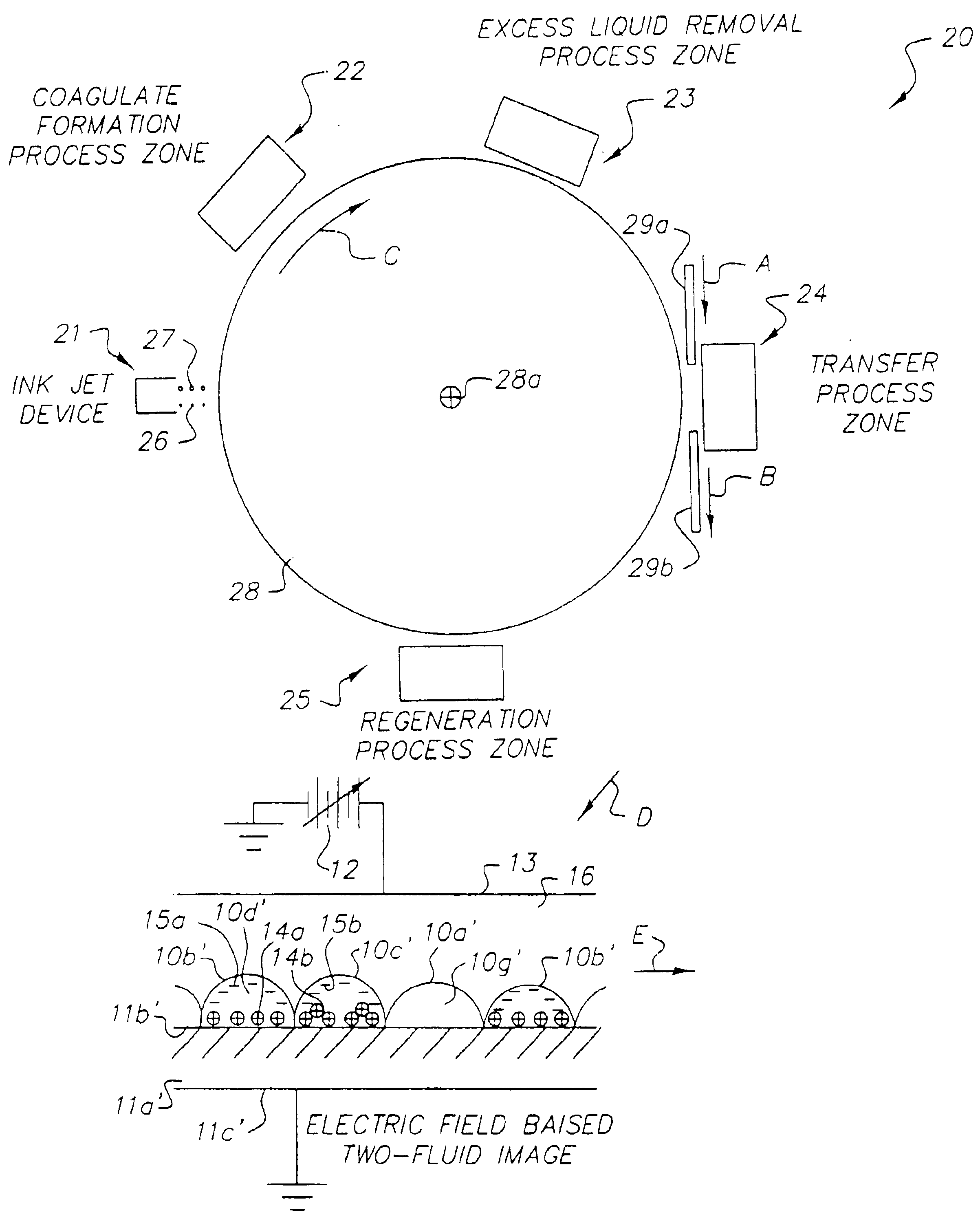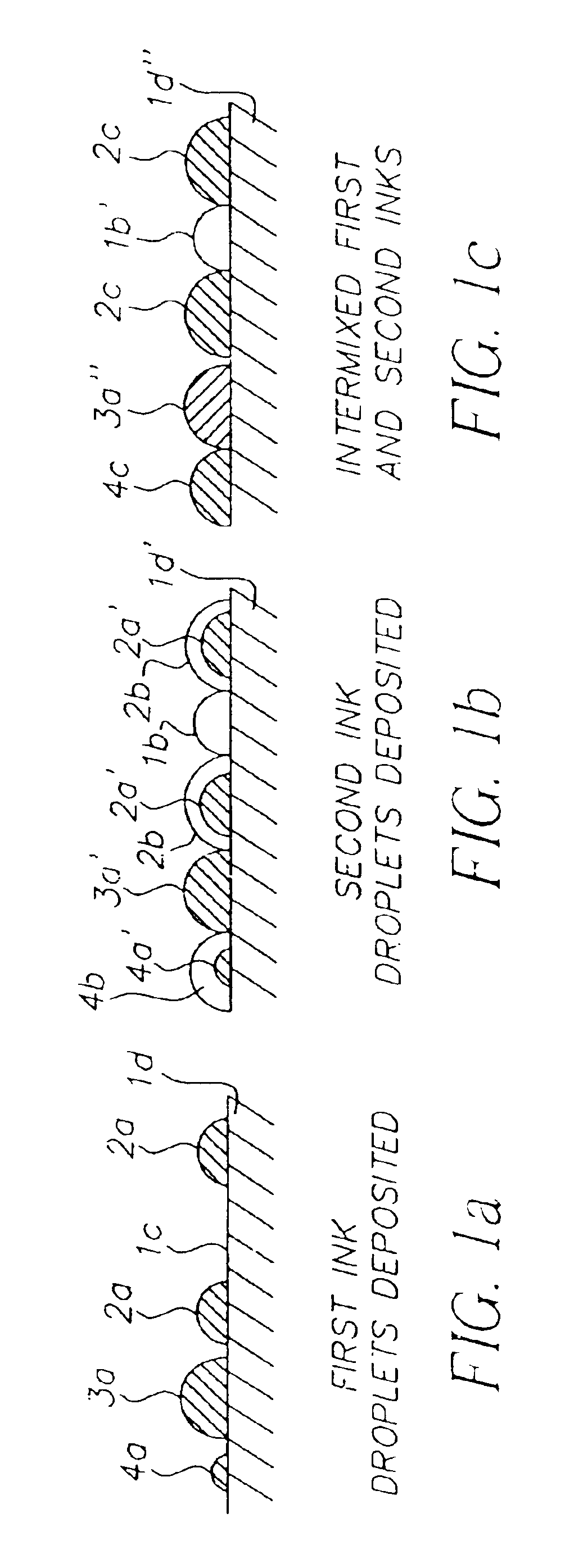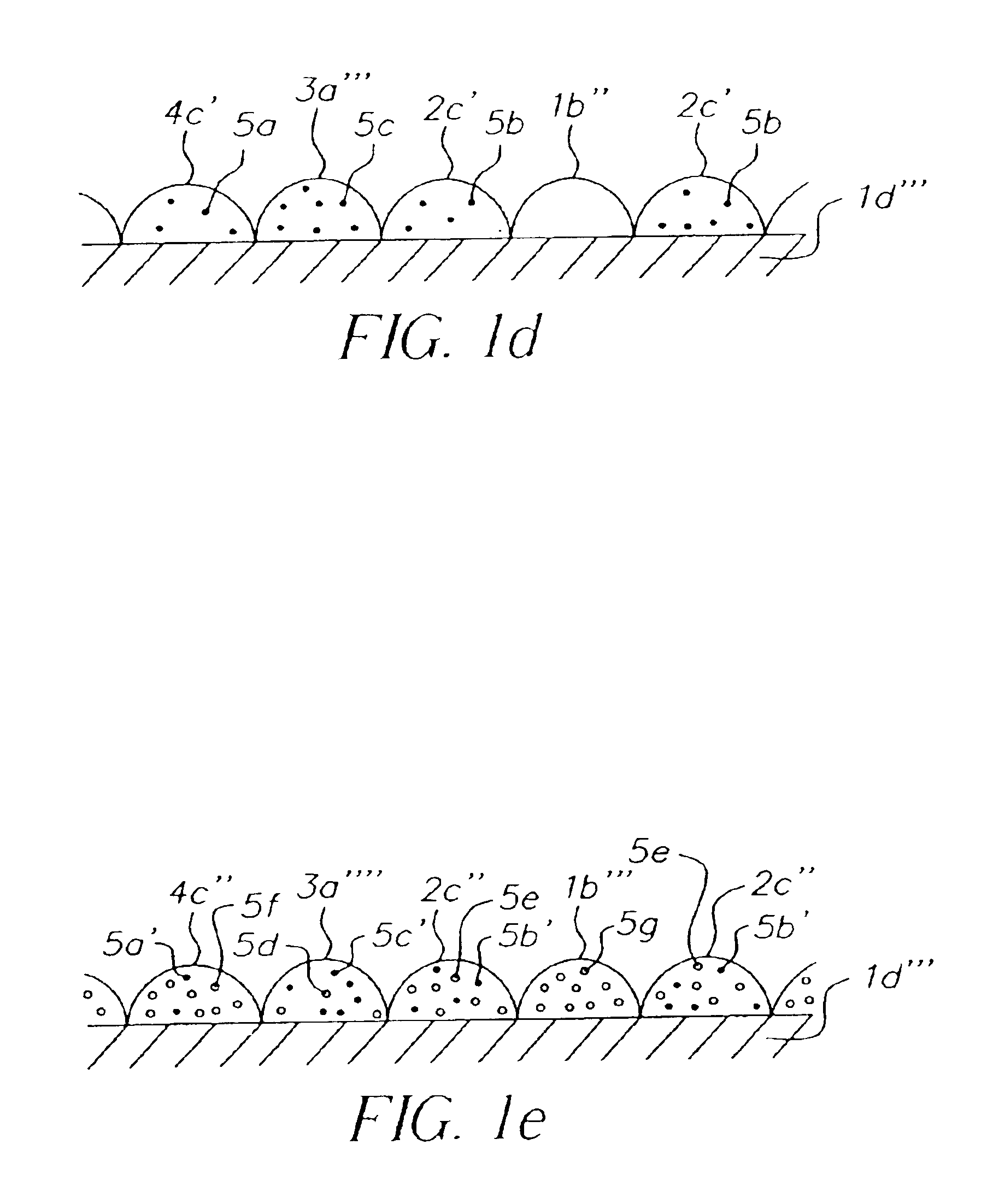Imaging using a coagulable ink on an intermediate member
a technology of intermediate members and inks, applied in the field of digital image recording and printing, can solve the problems of inability to achieve uniform image uniformity, limited image resolution, and relatively high electrical power density for creating electrocoagulated images
- Summary
- Abstract
- Description
- Claims
- Application Information
AI Technical Summary
Problems solved by technology
Method used
Image
Examples
Embodiment Construction
[0023]The invention provides an improved method and apparatus for ink jet imaging, the apparatus employing an ink jet device utilizing a coagulable ink. The ink jet device produces ink droplets according to a known manner for deposition on an intermediate member, which intermediate member has an operational surface upon which a primary ink jet image is formed by the ink jet device. The ink jet device includes a first source of ink for a first ink and a second source of ink for a second ink, of which first and second inks at least one is a marking coagulable ink jet ink. The first ink and the second ink are preferably both nonaqueous, or alternatively are preferably both aqueous-based. The liquid vehicle for an aqueous-based ink is usually water. However, an aqueous-based ink may contain a proportion, typically a minor proportion, of any suitable miscible nonaqueous solvent. In certain embodiments, the marking coagulable ink is a nonaqueous colloidal dispersion of pigmented particles...
PUM
| Property | Measurement | Unit |
|---|---|---|
| Flash point | aaaaa | aaaaa |
| Temperature | aaaaa | aaaaa |
| Fraction | aaaaa | aaaaa |
Abstract
Description
Claims
Application Information
 Login to View More
Login to View More - R&D
- Intellectual Property
- Life Sciences
- Materials
- Tech Scout
- Unparalleled Data Quality
- Higher Quality Content
- 60% Fewer Hallucinations
Browse by: Latest US Patents, China's latest patents, Technical Efficacy Thesaurus, Application Domain, Technology Topic, Popular Technical Reports.
© 2025 PatSnap. All rights reserved.Legal|Privacy policy|Modern Slavery Act Transparency Statement|Sitemap|About US| Contact US: help@patsnap.com



